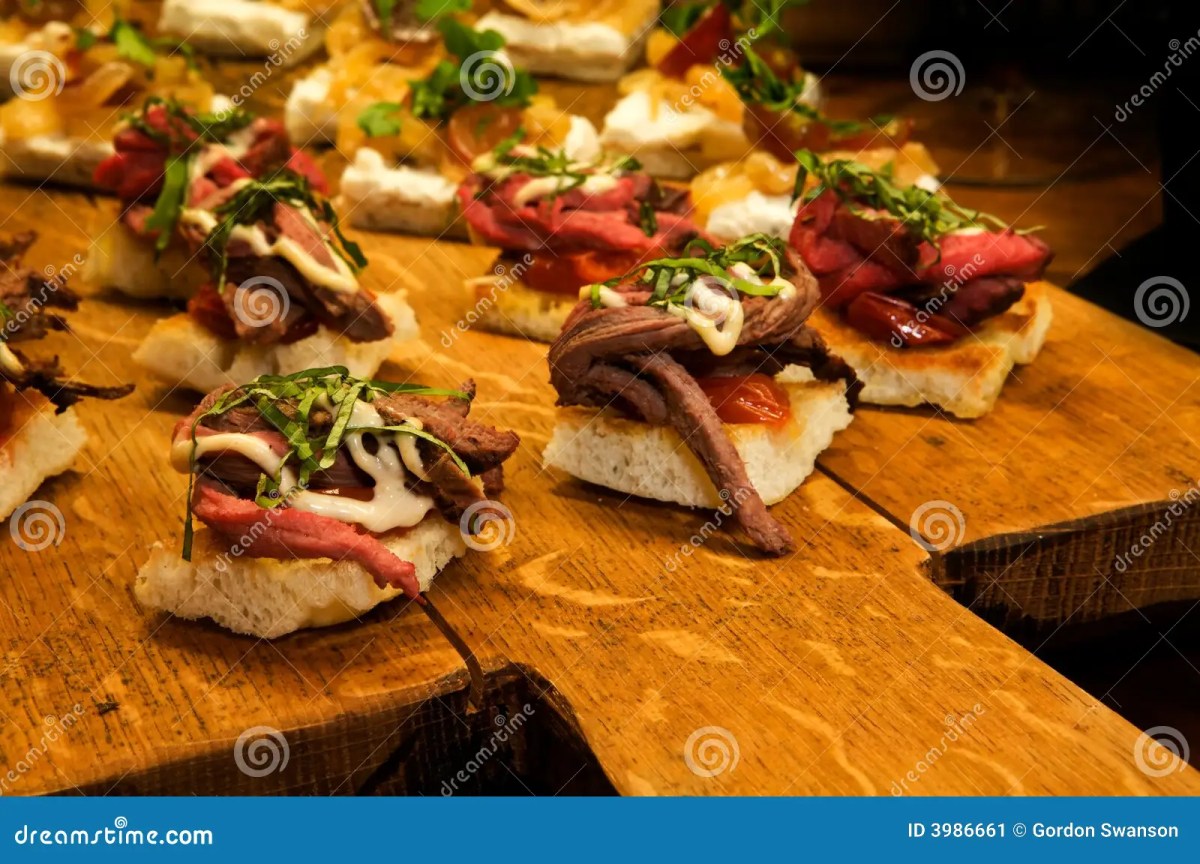Imagine a dinner party where each appetizer is a miniature masterpiece, a vibrant explosion of flavor and texture, all while adhering to the principles of the paleo diet. Forget bland and boring; this guide unveils the secrets to crafting sophisticated, visually stunning paleo appetizers that will leave your guests breathless. We’ll explore five unique recipes, each with detailed instructions and plating techniques that transform simple ingredients into edible works of art. Prepare to elevate your dinner party game to a whole new level.
From sourcing the finest seasonal ingredients to mastering elegant plating techniques and troubleshooting potential pitfalls, this comprehensive guide provides a step-by-step journey into creating unforgettable paleo appetizers. We’ll delve into the nuances of flavor profiles, texture combinations, and visual presentation, ensuring that every detail contributes to an exceptional dining experience. Discover how to capture the essence of each dish through stunning photography, transforming your culinary creations into captivating visual narratives.
Presentation and Plating Techniques

Elevating paleo appetizers from delicious to dazzling requires a keen eye for presentation. The right plating technique can transform simple ingredients into a feast for the eyes, enhancing the overall dining experience and leaving a lasting impression on your guests. Careful consideration of color, texture, and height creates visual harmony and emphasizes the natural beauty of the ingredients.
Plating Techniques for Five Paleo Appetizers
The following explores three sophisticated plating techniques for each of five example paleo appetizers: bison meatballs, avocado deviled eggs, salmon rillettes, baked brie with berries, and celery sticks with almond butter. Each technique offers a unique approach to visual appeal, demonstrating the versatility of plating to suit different styles and occasions.
Bison Meatballs Plating Techniques
- Classic Spoon Technique: Three perfectly browned bison meatballs are nestled in a shallow pool of rich, dark balsamic glaze on a rectangular white plate. A scattering of fresh parsley adds a pop of green, contrasting beautifully with the deep brown of the meatballs and the dark glaze. The simplicity of this presentation allows the meatballs to be the star.
- Elevated Skewer Presentation: Two meatballs are threaded onto a small, elegant skewer alongside a cherry tomato and a cube of grilled zucchini. This is repeated on a second skewer, and both are placed on a slate platter. A drizzle of pesto adds a vibrant green accent and a hint of freshness.
- Modern Deconstructed Style: The meatballs are halved and arranged artfully on a white plate. A small bowl of the balsamic glaze sits alongside, allowing guests to customize the amount of sauce. A sprinkle of finely chopped walnuts provides textural contrast and adds a touch of earthiness.
Avocado Deviled Eggs Plating Techniques
- Neat Rows: Six perfectly halved deviled eggs are arranged in two neat rows on a small rectangular plate. A sprinkle of smoked paprika adds a subtle smoky flavor and a vibrant red hue. The uniformity of the arrangement creates a sense of elegance and sophistication.
- Artistic Swirl: The avocado filling is piped onto a plate in a beautiful swirl, creating a visually appealing design. Halved deviled eggs are artfully placed around the swirl, with a few microgreens scattered for a touch of green. This technique emphasizes the creamy texture of the avocado.
- Individual Cups: Each deviled egg half is carefully placed in a small, elegant cup or ramekin. A tiny sprig of dill adds a fresh herbal note and a pop of green. This presentation is ideal for a more formal setting.
Salmon Rillettes Plating Techniques
- Rustic Crostini Arrangement: A generous dollop of salmon rillettes is placed on each of three toasted baguette slices. A scattering of capers adds a briny counterpoint and visual interest. The rustic nature of the presentation complements the rich flavor of the rillettes.
- Elegant Tartlets: The salmon rillettes are carefully spooned into mini tart shells. A small sprig of fresh dill is placed on top of each tartlet, adding a touch of elegance. The golden-brown tart shells provide a beautiful contrast to the pale pink rillettes.
- Layered Presentation: A bed of thinly sliced cucumber is arranged on a plate. A generous mound of salmon rillettes is placed on top, followed by a scattering of finely chopped chives for a pop of green. This layered presentation adds visual depth and texture.
Baked Brie with Berries Plating Techniques
- Simple Elegance: The baked brie is placed on a small, rustic wooden board. A selection of fresh berries is arranged around the brie, creating a visually appealing contrast between the creamy white cheese and the vibrant colors of the berries.
- Gourmet Crostini: Slices of toasted baguette are arranged around the baked brie. Guests can spread the warm brie onto the baguette slices and top with berries. This interactive approach makes the appetizer more engaging.
- Deconstructed Presentation: The warm brie is served alongside a small bowl of mixed berries and a selection of crackers or toasted nuts. This allows guests to customize their portions and create their own unique combinations.
Celery Sticks with Almond Butter Plating Techniques
- Striking Contrast: Celery sticks are arranged on a white plate in a visually appealing pattern. Small bowls of almond butter and a sprinkle of sea salt are served alongside, creating a striking contrast between the crisp green celery and the creamy almond butter.
- Elegant Dipping Bowls: Small, elegant bowls are filled with almond butter. Celery sticks are arranged around the bowls, creating a visually appealing and functional presentation. A few sprigs of fresh parsley add a touch of green.
- Artistic Drizzle: Almond butter is drizzled artistically onto a plate. Celery sticks are arranged around the drizzle, creating a visually interesting pattern. A few chopped pistachios add a pop of color and texture.
Photographic Presentation of Paleo Appetizers
To create visually stunning photos, use natural light whenever possible. A soft, diffused light source will prevent harsh shadows and highlight the textures and colors of the food. Shoot from a slightly elevated angle to create a more dynamic and appealing composition. Use a neutral background, such as a light-colored tablecloth or wooden board, to avoid distracting from the food. A shallow depth of field can help blur the background and draw attention to the appetizers.
Ingredient Sourcing and Preparation
Crafting truly exceptional paleo appetizers hinges on the quality of your ingredients. Prioritizing fresh, seasonal, and ideally locally sourced produce elevates the flavor profiles and ensures optimal nutritional value. The preparation methods you choose will further determine the final texture and taste, transforming simple ingredients into culinary masterpieces.
The best sources for high-quality paleo ingredients are farmers’ markets, local farms, and reputable specialty food stores. Farmers’ markets offer a vibrant array of seasonal fruits and vegetables, often picked just hours before you purchase them. The intense flavors and crisp textures of these ingredients are unparalleled. Local farms provide a direct connection to the source, allowing you to learn about growing practices and ensuring responsible sourcing. Specialty stores can be valuable for sourcing higher-quality meats, nuts, and seeds, often from sustainable and ethical producers. When selecting ingredients, look for vibrant colors, firm textures, and an overall sense of freshness. Avoid anything that appears bruised, wilted, or otherwise compromised.
Optimal Preparation Methods for Key Ingredients
Proper preparation is key to unlocking the full potential of your paleo ingredients. For example, consider sweet potatoes: roasting them brings out their natural sweetness and creates a caramelized exterior, while steaming yields a softer, fluffier texture ideal for mashing. Similarly, the preparation of meats significantly impacts the final dish. Slow-cooking a brisket yields tender, melt-in-your-mouth results, perfect for a rich and flavorful appetizer, while quickly searing a steak produces a delightful crust with a juicy interior, well-suited for a more elegant presentation. Consider the final application of the ingredient when choosing your preparation method.
Sweet Potato Preparation Techniques
Sweet potatoes offer a versatility that makes them a cornerstone of many paleo appetizers. Roasting sweet potatoes at 400°F (200°C) for approximately 45 minutes, until tender and slightly caramelized, yields a rich, intensely sweet flavor. Imagine the vibrant orange flesh, glistening with natural sugars, offering a beautiful contrast against other ingredients. Alternatively, steaming sweet potatoes until tender preserves their moisture and creates a lighter, fluffier texture. Picture the soft, yielding texture, ideal for mashing and incorporating into creamy dips or as a base for other components. The choice between roasting and steaming depends entirely on the desired outcome for your specific appetizer. One could even consider pureeing roasted sweet potatoes for a smoother consistency in a mousse or dip. The contrasting textures and flavor profiles achieved through these different methods add significant depth to your culinary creations.
Dietary Considerations and Adaptations
Paleo appetizers, while naturally focusing on whole, unprocessed foods, can still present challenges for individuals with specific dietary needs or restrictions. Understanding potential allergens and adapting recipes accordingly is crucial for ensuring all your guests can enjoy a delicious and safe dining experience. This section Artikels common paleo dietary restrictions and offers modifications to create inclusive and delectable appetizers.
Common Paleo Allergens and Modifications
Many individuals following a paleo diet avoid common allergens such as nuts, seeds, dairy, and eggs. These ingredients are frequently used in appetizers, so thoughtful substitutions are essential for accommodating these restrictions. The following modifications demonstrate how to maintain flavor and texture while eliminating potential allergens. For example, a recipe calling for almond flour could easily substitute sunflower seed flour for a nut-free option, maintaining a similar crumbly texture in paleo breadsticks. Similarly, dairy-free alternatives such as coconut cream or full-fat coconut milk can replace cream cheese or yogurt in dips, providing a rich and creamy texture.
Nut-Free Paleo Appetizers
Several paleo appetizers can be easily adapted to be nut-free. Substituting sunflower seeds, pumpkin seeds, or tahini (sesame seed paste) for nuts in dips and sauces is a simple and effective way to maintain flavor and creaminess. For example, a traditional paleo pesto could be modified by using sunflower seeds instead of pine nuts, resulting in a vibrant green sauce with a slightly different but equally delicious flavor profile. Similarly, paleo crackers often incorporate nuts; substituting coconut flour and tapioca flour creates a nut-free, satisfying alternative. Always carefully check ingredient labels to ensure complete avoidance of cross-contamination.
Dairy-Free Paleo Appetizers
Dairy is another common allergen, easily avoided in many paleo recipes. Coconut milk, full-fat coconut cream, and avocado can be used as creamy substitutes in dips and sauces. For example, a dairy-free cashew cream (using soaked cashews) could be replaced with a creamy avocado-based dip, adding lime juice and cilantro for a fresh, vibrant flavor. Furthermore, many paleo-friendly vegetable sticks and crudités naturally require no dairy. Remember that some commercially produced paleo products may contain hidden dairy; always check labels thoroughly.
Egg-Free Paleo Appetizers
While eggs are a staple in many paleo recipes, many appetizers can be prepared without them. Binders such as mashed sweet potato or banana can be used in place of eggs in some recipes. For instance, if a recipe for paleo meatballs requires eggs as a binder, mashed sweet potato could provide a similar binding effect, creating a moist and flavorful alternative. Many vegetable-based appetizers, such as stuffed mushrooms or zucchini boats, are naturally egg-free.
Addressing Common Paleo Diet Questions
These appetizers easily integrate into a balanced paleo meal plan. They provide a variety of flavors and textures, while adhering to the principles of a whole-foods, nutrient-rich diet. Focusing on colorful vegetables, lean protein sources (where appropriate), and healthy fats ensures a well-rounded and satisfying meal. It is important to remember that portion control remains crucial, even within a paleo framework. These appetizers, while delicious, should be consumed in moderation as part of a larger, balanced meal plan. Individual needs may vary; consulting a registered dietitian or nutritionist can provide personalized guidance.
Creating fancy paleo appetizers for your dinner parties doesn’t have to be intimidating. With careful planning, attention to detail, and a touch of creativity, you can transform simple ingredients into exquisite culinary masterpieces that impress even the most discerning palates. Remember the power of presentation; a beautifully plated appetizer enhances the dining experience, making it a truly memorable occasion. By mastering these techniques and recipes, you’ll not only delight your guests but also gain confidence in your culinary abilities, opening up a world of exciting possibilities for future gatherings.
Quick FAQs
Can I make these appetizers ahead of time?
Many of these appetizers can be partially prepared in advance. Check individual recipes for specific instructions, as some elements are best added just before serving to maintain optimal freshness and texture.
What if I have guests with specific dietary needs beyond paleo?
Always check with your guests beforehand about allergies and intolerances. Many paleo recipes can be adapted to accommodate common restrictions by substituting ingredients. For example, nut-free options can often be created using sunflower seeds or pumpkin seeds.
Where can I find high-quality paleo ingredients?
Prioritize local farmers’ markets and specialty grocery stores for the freshest, highest-quality ingredients. Look for organic and sustainably sourced options whenever possible.
How do I keep the appetizers looking fresh during the party?
Use appropriate serving dishes and keep cold appetizers chilled. For warm appetizers, use warming trays or chafing dishes to maintain temperature. Consider covering appetizers briefly when not actively serving to prevent them from drying out.


